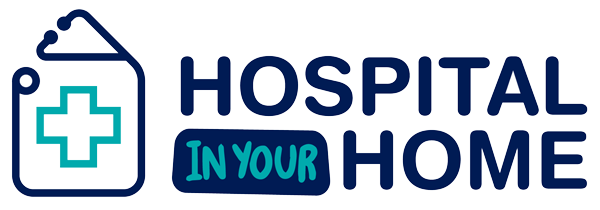Home Hospitalization vs Traditional Hospital Stays: A Cost Comparison Analysis

The healthcare landscape is evolving, with an increasing focus on cost efficiency and patient comfort.
As such, comparing home hospitalization vs traditional hospital stays reveals striking contrasts and potentially transformative insights for patients and healthcare systems.
This analysis ventures beyond the surface to uncover each model’s nuanced financial impacts and hidden benefits.
Understanding Home Hospitalization
Home hospitalization, also known as the “Hospital at Home” model, has increasingly become a focal point in modern healthcare discussions.
This model allows patients to receive hospital-level care in the comfort of their homes through remote monitoring, daily healthcare professional visits, and emergency support systems.
Initially conceptualized in the early 1990s by Professor Bruce Leff from Johns Hopkins University, the model has shown considerable growth and is particularly beneficial for treating conditions such as chronic obstructive pulmonary disease, pneumonia, and heart failure.
The lesser-known fact about home hospitalization is its integration of sophisticated technology.
Patients at home might wear IoT-enabled devices that monitor vital signs in real-time, sending alerts to healthcare providers if anomalies are detected—an advancement that mirrors the high-tech monitoring systems in traditional hospital settings.
Overview of Traditional Hospital Stays
Traditional hospital stays typically involve patients admitted for various treatments, ranging from minor procedures to major surgeries.
The setting includes access to various medical professionals and sophisticated medical technology.
However, this model often involves significant logistical arrangements and can induce stress due to unfamiliar environments.
An overlooked aspect of traditional hospital stays is the substantial overhead costs of maintaining hospital facilities.
Hospitals must manage expenses related to building maintenance, utilities, and administrative staff, all of which contribute significantly to the overall cost of care—a burden that home hospitalization does not entail to the same extent.
Cost Analysis of Home Hospitalization
Delving into the costs, home hospitalization offers an intriguing cost structure.
Direct costs include the rental or purchase of medical equipment and technology for remote monitoring.
However, the indirect costs—or savings—are where patients benefit most.
For example, patients save on commuting and parking fees and often reduce the need for extended family caregiving, which might otherwise lead to lost wages.
From an insurer’s perspective, the model can lead to significant savings.
A study by the American Journal of Managed Care found that home hospitalization reduced costs by about 30% compared to traditional hospitalization, primarily due to decreased overhead and lower resource utilization, such as laboratory tests and imaging.
Cost Analysis of Traditional Hospital Stays
In contrast, traditional hospital stays come with a hefty price tag.
On average, A day in a U.S. hospital can cost upwards of $2,000, with intensive care fees soaring much higher.
These costs cover room and board, medical procedures, medication, and the continuous operation of high-tech equipment.
The financial strain extends beyond the billable services, including non-medical costs that patients incur, such as food and lodging for visiting family members.
Furthermore, the U.S. stands out for its high expenses when comparing international costs.
For instance, hospital stay costs in countries with healthcare systems like Europe or Canada can be significantly lower due to government regulations and subsidy models.
Comparative Analysis
When directly comparing “home hospitalization vs traditional hospital stays,” the cost benefits of home hospitalization become apparent.
Home care can be much more cost-effective for many scenarios, particularly chronic disease management.
Visual aids like charts and tables can help illustrate these differences succinctly, showing the breakdown of costs associated with each model.
Patient and Insurer Perspectives
Patients often report higher satisfaction with home hospitalization due to the comfort and personalization of care.
There’s a psychological benefit to recovering at home, which can translate into faster recuperation times and reduced stress levels.
Insurers see home hospitalization as a way to minimize claims costs while maintaining high-quality care standards.
They are progressively supportive as data affirms the cost-effectiveness and patient satisfaction associated with this model.
Challenges and Limitations
Despite its benefits, home hospitalization isn’t without challenges.
The initial setup cost for medical technology and training personnel can be high.
Moreover, home hospitalization is not suitable for every patient—those requiring complex surgical procedures or intensive care are better served in traditional hospital environments.
Additionally, there’s the issue of insurance coverage. Not all insurers cover home hospitalization comprehensively, which can hinder its adoption.
Regulatory hurdles also persist as healthcare policies struggle to keep pace with technological advancements and innovative care models.
The Future of Hospital Care
The future looks promising for home hospitalization. As technology advances and as healthcare systems increasingly strive to cut costs while improving care, home hospitalization could become a more commonplace option.
Predictive analytics and AI could further revolutionize this model, making at-home care feasible and preferable for an even broader range of conditions.
Conclusion
The comparative analysis of “home hospitalization vs traditional hospital stays” reveals a compelling case for expanding home-based care, particularly from a cost perspective.
While not universally applicable, the financial benefits and high patient satisfaction rates make it a formidable alternative to traditional hospitalization.
As healthcare evolves, the decision between home hospitalization and traditional hospital stays will increasingly depend on individual patient needs, technological capabilities, and insurance frameworks.
However, one thing is clear: the future of healthcare could be as close to our living rooms.
If you are considering this innovative care model, we invite you to contact Hospital In Your Home US to explore how we can assist you in successfully implementing hospital at home.
To explore this innovative care model further and leverage three decades of specialized experience, visit Hospital In Your Home in Australia.
FAQs
What is the main cost difference between home hospitalization and traditional hospital stays?
Home hospitalization typically results in lower costs due to reduced overhead, such as facility fees, utilities, and staffing. In contrast, traditional hospital stays include these costs, making them more expensive overall.
Are insurance providers more likely to cover home hospitalization?
Many insurance providers are beginning to recognize the cost-effectiveness of home hospitalization and offer coverage. However, coverage details vary depending on the policy and the healthcare provider.
Does home hospitalization impact the quality of care compared to traditional hospital stays?
Studies show that home hospitalization can provide care equal to or even better than traditional stays, as patients often experience more personalized attention and comfort in their home environment, reducing stress and improving recovery times.
What types of medical conditions are suitable for home hospitalization?
Home hospitalization is typically suitable for conditions that require ongoing monitoring or treatment but don’t necessitate intensive care, such as chronic illnesses, post-surgical recovery, and certain infections.
How does home hospitalization save on indirect costs for patients?
Patients save on indirect costs like travel, meals, and potential childcare needs when receiving care at home, whereas traditional hospital stays often come with these additional expenses.
